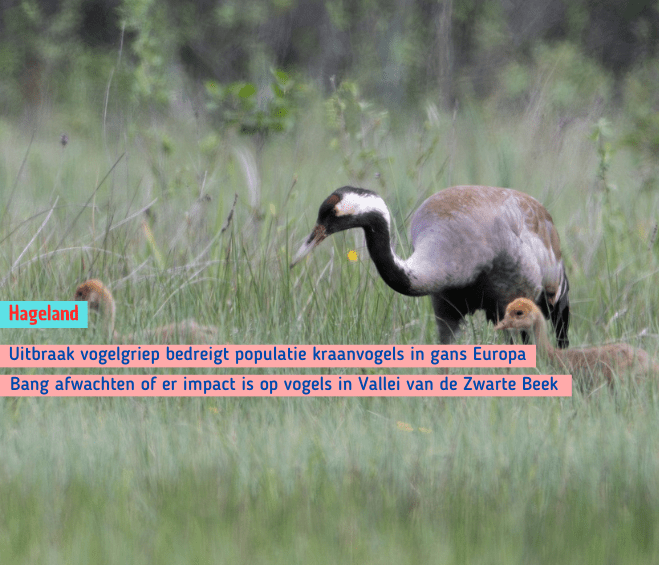A severe bird flu outbreak threatens the crane population
Twice a year, migrating cranes provide a bustling spectacle above Hagland. At least if the temperatures make it develop in the right direction. Populations of the loudly chattering birds could shrink dramatically in the coming years. Natuurpunt reports that about 20,000 to 30,000 cranes have died in Hortobagy, Hungary, possibly from bird flu. The dead birds were likely infected during migration, which is bad news for this very special group. Bird flu can spread throughout Europe. A pair of cranes have also returned to the Zwarte Peak Valley for three consecutive years to breed. This is partly due to rehydration of the area. So we have to wait and see if the result of all these efforts will go away due to the deadly virus.
According to Natuurpunt, the question was not whether there would be an outbreak of bird flu in cranes, but when and where. Limited outbreaks have been previously reported, but their impact remained limited because the animals were sufficiently dispersed. This seems a little different now. At the end of October, 194,750 cranes were counted around Lake Hungary. Usually between 100,000 and 120,000 birds gather at this migration site. Therefore, the outbreak of the virus came at the worst possible time and place.
Hortobagy’s cranes come mainly from Finland. In principle, there is no problem for the cranes passing over our area and following the migration route to Western Europe. These animals spend the winter in Spain and France, and partly also in North Africa. However, about ten years ago, the migration routes of Central Europe and Western Europe became connected in two places.
Cranes flying along the northern side of the Alps reach France via Austria and Germany. They then go through the Rhone Valley to the Camargue where they join the Western European Route.
Cranes flying across the southern side of the Alps pass through northern Italy to the Camargue. They travel to Jalocante in Spain where they meet cranes passing over Flanders.
Meanwhile, the first dead birds were found in Italy and last week also in Gallucanta. The bodies are being examined to determine if it is indeed bird flu, but there appears to be little doubt about it.
The only way to slow the disease is to remove dead birds whenever possible, but since cranes live in watery areas, this is not easy. Experts now hope that the winter will be very rainy in France and Spain. The birds will then have a much larger area where they spend the night, which will reduce the spread of the virus. If this does not happen, the number of cranes will be severely affected. A bird infected with the dangerous type of virus usually dies within three days.

“Coffee buff. Twitter fanatic. Tv practitioner. Social media advocate. Pop culture ninja.”










More Stories
Which can cause an increase in nitrogen.
The Central State Real Estate Agency has no additional space to accommodate Ukrainians.
The oystercatcher, the “unlucky national bird,” is increasingly breeding on rooftops.